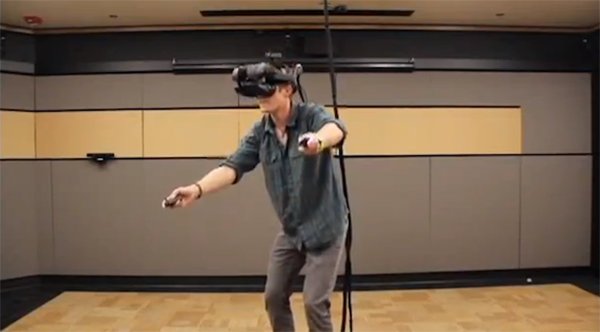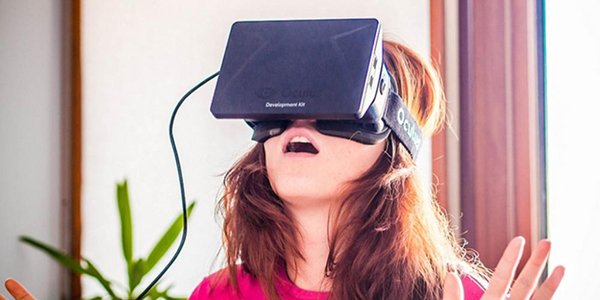Virtual Reality (VR) is bringing a new technological revolution. Many companies, organizations and users are talking about the future of this technology, including the impact of VR on games, entertainment and even traditional industries. However, we noticed that some organizations have conducted deeper explorations of VR technology, such as Stanford's Virtual Human Interaction Lab (hereinafter referred to as Stanford VHIL).

Stanford VHIL was founded in 2003 and at the beginning of its establishment attracted Apple to visit. The founding laboratory of about 15 may be the best virtual environment laboratory in the world. Its founder Jeremy Bailenson has been paying attention to VR technology for more than 20 years.
Interestingly, Jeremy Bailenson is also a consultant on the US government's virtual reality policy and Facebook CEO Zuckerberg. Before spending $2 billion to acquire Oculus, Zuckerberg had visited Stanford VHIL and had a three-hour conversation with Jeremy Bailenson.
The mission of Stanford VHIL
Jeremy Bailenson said earlier, "We are sociologists rather than technical experts. This is different from other laboratories and technology companies." The purpose of the laboratory is not only to break through the limits of existing VR software and hardware, but also to explore More possibilities for applying this technology to make VR technology change the world in a more positive way.
Stanford VHIL stated on the official website that its mission is to understand user interaction in VR and other forms of digital representation of human beings in different media (media, games, etc.). Researchers mainly explore the interaction of users in the digital world through empiricism and behavioral science methods.

Not only that, but lab technicians often have to develop new gesture monitoring systems, 3D modeling techniques or agent-behavior algorithms to help answer these basic social issues. Therefore, Stanford VHIL is also engaged in research that provides new methods for VR simulation.
Essentially speaking, Stanford VHIL is a social science academic research center, and its research projects focus on three major issues: What are the new social problems brought about by using VR? How to use VR as a basic tool to study the nuances of face-to-face interaction? How to use VR? Improve everyday life such as communication, empathy and communication systems.
Stanford VHIL Research Project
Below, we look at some of the projects that Stanford VHIL has done in VR.
HOMUNCULAR FLEXIBILITY
In this project, technicians studied the concept of "homuncular flexibility", a capability to learn and control virtual avatars in interactive tasks. For example, in order to go further in the virtual space, can the user control the extra body of the virtual body? The project will study the appearance of the virtual body and the way the user controls, whether it will affect the success of the task, the user's degree of love and sense of participation.

When the user is immersed in the VR experience, the technicians also try to move the user's actual body, and explore how the behavior enhances the sense of participation and immersion. The researchers also studied how the user learned to map degrees of freedom into the digital space, including emotion recognition time, the ability to add limbs, and the ability to use mapping information to help the task.
LEARNING IN IMMERSIVE VR
Virtual classrooms give researchers complete control over virtual teachers, students, and the surrounding environment, including behavior and appearance. In collaboration with the Graduate School of Education, Stanford VHIL studied the interaction between users, classroom structure and learning environment. In the virtual world, researchers can also monitor user behavior in the classroom and use it to find relationships between user behavior and learning effectiveness.

Research shows that having a virtual environment with social interactions helps increase motivation, focus on experiences, and improve learning outcomes. In addition, experiments in non-virtual worlds have also been replicated and extended in virtual reality, including research on prejudice threats imposed by virtual avatars, and the use of gestures in solving mathematical problems.
IMMERSION AND PRESENCE
With the introduction of VR technology into the living room from the laboratory, the question of how to bring "sufficient immersion" becomes particularly important. In order to create an ideal VR experience, Stanford VHIL studied the degree of immersion needed for an ideal VR experience through mobile VR. This study used mobile VR's flexibility to acquire a large number of samples.

The study of VR immersion can be done in three ways: space, social, and learning, each of which affects the participants' virtual environment. Hardware operations include field of view (FOV), image sticking, refresh rate, delay, and tracking levels. The project will not only collect head and body movement data, but will also record heart rate and skin electrical changes through physiological sensors.
SUSTAINABLE BEHAVIORS
Social issues such as sustainable development are also research projects of Stanford VHIL. Some research projects use VR technology to allow the public to see the impact of individual actions (such as driving a fuel-efficient car or living in a house with low energy efficiency) on the global environment, so that they can better meet the challenges of climate change.

In an ocean acidification VR simulation experience, users will be turned into coral reefs to witness the ocean acidification process in order to understand the different stages of ocean acidification. In another project, technicians recorded the underwater activities of fish and created a virtual avatar of fish in VR so that humans can play fish in a virtual environment to understand the underwater environment.
EXAMINING RACISM
Stanford VHIL also explored the possibility of VR in eliminating racial discrimination, gender discrimination, and so on. With a few exceptions, most cases show that VR can moderately enhance empathy. In fact, the NFL has begun to use VR technology to train players to get rid of gender and racism.

It is worth mentioning that StriVR Labs, established by former Stanford team member Derek Belch, received VR technical support from Stanford VHIL and applied VR to NFL athlete training. The VR training program provided by StriVR Labs helps to enhance the performance of athletes so that they do not have to worry about training injuries, nor do they have to endure summer heat.
EMPATHY AT SCALE
These projects mainly use VR technology to teach empathy to users, such as playing some distance in VR. Stanford VHIL's research shows that users can feel the disability and the feeling of different skin color groups in the VR environment, so as to better generate empathy.

However, there are three shortcomings in past research: small and repeated samples, lack of verticals, and limited empathy scripts. Therefore, Stanford VHIL hopes to adopt new projects to collect more extensive sample data, test more empathetic scripts, and motivate factors that stimulate empathy. If this project is successful, it will also test the effect beyond 6 months.
CHILDHOOD DEVELOPMENT AND IMMERSION
The debate over whether VR is applicable to children has not stopped. Stanford VHIL studied children's behavior and social feedback on immersive VR. Technicians also conducted a series of studies to help the public better understand children's experiences in the new technology of VR.

In fact, studies have shown that virtual environments can give children different memories from traditional media. Stanford VHIL's research will continue to study the impact of VR on children's psychological, social and behavioral.
It can be seen that Stanford VHIL's research on VR is more concentrated in the social science field. In the future, with the popularization of VR technology, it may affect the treatment of diseases, physical training and even human thought and cognition. It seems that companies and developers should work together to create a positive VR experience and reduce the negative impact of VR.
- Video and stereo audio in one Cable Assembly
- 24K gold plated RCA male connectors on each end
- 25-gauge high quality Video Cable construction
- 27-gauge high quality Audio cable construction
- Bare copper braid shield for rejection of EM and RF interference
Hdmi To Audio Cable,Audio And Video Cable,Aux Audio And Video Cable,Rca To Rca Cable
CHANGZHOU LESEN ELECTRONICS TECHNOLOGY CO.,LTD , https://www.china-lesencable.com
